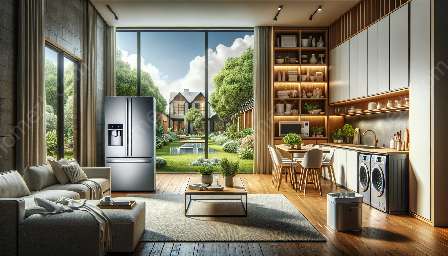Household appliances are integral to modern living, but sometimes their noise can be disruptive. Understanding the basics of noise control in household appliances and discovering effective solutions can significantly improve the living environment. In this comprehensive guide, we will explore the principles of noise control in appliances, practical solutions for reducing noise, and how to create a quieter home environment.
The Basics of Noise Control in Household Appliances
Household appliances such as refrigerators, dishwashers, washing machines, and air conditioners can generate varying levels of noise during operation. This noise can be attributed to several factors, including the type of appliance, its components, and the way it is installed. Understanding the sources of noise in household appliances is crucial to implementing effective control measures.
Understanding Noise Sources
Common sources of noise in household appliances include vibrating components, airflow turbulence, and mechanical movements. Vibrating components, such as motors and fans, can create noise when they are not properly isolated or dampened. Airflow turbulence within appliances, especially in ventilation systems, can also result in noise. Finally, mechanical movements, such as the rotation of a washing machine drum or the operation of compressor motors, can generate audible sounds.
Noise Control Principles
Applying noise control principles to household appliances involves addressing the sources of noise and implementing mitigation strategies. These principles include vibration isolation, sound absorption, damping, and structural modifications. Vibration isolation techniques aim to decouple vibrating components from the appliance structure, preventing the transmission of noise. Sound absorption materials, such as acoustic foams or panels, can be used to absorb noise energy within the appliance. Damping materials, such as rubber or viscoelastic compounds, can mitigate vibrations and reduce noise. Structural modifications, such as adding soundproofing layers to appliance enclosures, can also contribute to noise reduction.
Noise Control Solutions for Household Appliances
Several practical solutions can be employed to minimize the noise generated by household appliances. These solutions range from simple DIY techniques to more advanced modifications.
Proper Installation and Maintenance
Ensuring that household appliances are properly installed and maintained is essential for noise control. Proper installation includes leveling appliances to prevent vibrations and securing them to stable surfaces. Regular maintenance, such as cleaning filters and lubricating moving parts, can prevent excessive noise due to component wear and tear.
Noise-Reducing Mats and Pads
Placing noise-reducing mats or pads under appliances can help absorb vibrations and reduce noise transmission to the surrounding environment.
Acoustic Enclosures
Constructing acoustic enclosures around noisy appliances, especially those with motorized components, can effectively contain and reduce noise. These enclosures can be made from sound-absorbing materials and designed to allow ventilation while minimizing noise escape.
Upgrading to Quieter Models
When replacing household appliances, consider choosing models specifically designed for lower noise emissions. Look for appliances that are energy-efficient and equipped with noise-reducing features.
Noise Control in Homes
Beyond addressing noise from individual appliances, creating a quieter home environment involves considering overall noise control measures.
Soundproofing and Insulation
Improving the insulation and soundproofing of walls, floors, and ceilings can significantly reduce external noise infiltration and improve internal acoustic conditions.
Strategic Furniture Placement
Arranging furniture and decor to strategically absorb, diffuse, or block noise can contribute to a quieter indoor environment. Soft furnishings, curtains, and carpets can help reduce reverberation and absorb sound energy.
Implementing Quiet Zones
Designating specific areas in the home as quiet zones can help reduce the impact of noise from appliances and other sources. Consider creating designated relaxation or study areas where noise levels are minimized.
Conclusion
By understanding the basics of noise control in household appliances and exploring effective solutions, homeowners can significantly improve the comfort and tranquility of their living environment. Through a combination of appliance-specific noise control measures and overall home noise management strategies, it is possible to create a peaceful and harmonious living space.


